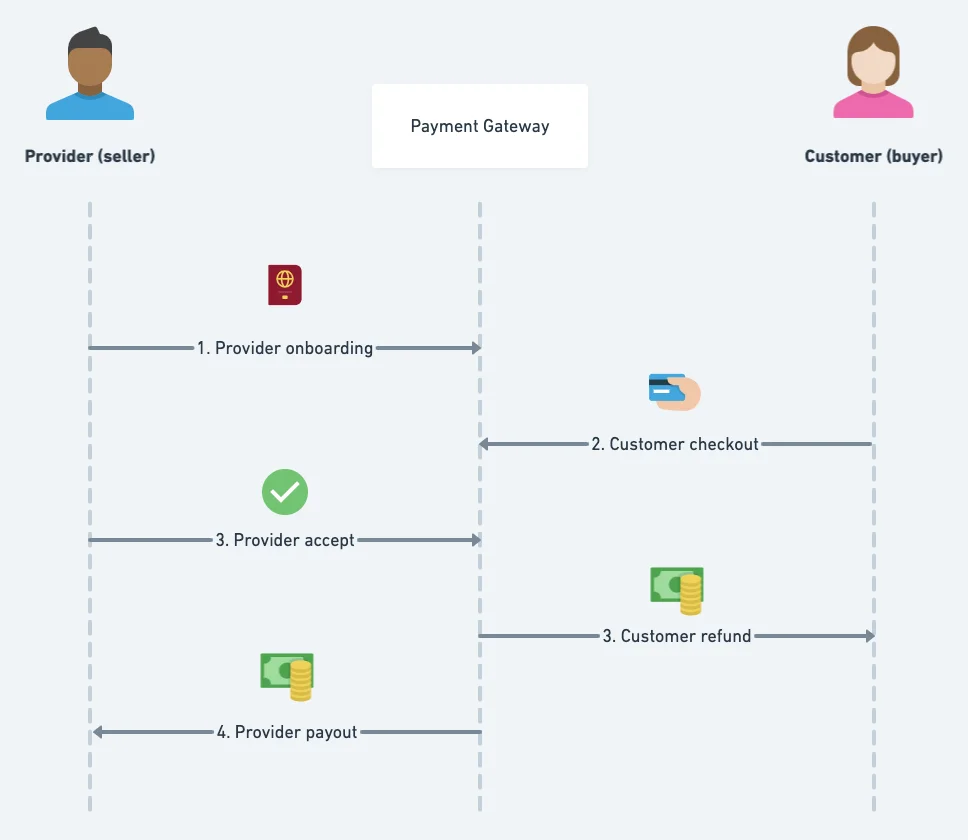How it works

Step 1: Customer checkout
Customer checkout happens when the customer initiates a transaction. At this stage, they also provide the payment information, such as their credit card number. Also, the payment will be made at this point. The payment gateway will preauthorize the money, i.e. reserve the money on the customer's credit card.
Step 2: Seller acceptance
After the customer has checked out, the seller has the ability to either accept or reject the request. If the request is accepted, the payment will be captured, and the reserved money will be transferred from the customer's credit card to the payment gateway.
Step 3: Customer refund
Typically, the marketplace payment flow contains a delayed payment period. This is the time between when the money is captured from the customer's credit card and when it is transferred to the seller's bank account. The payout in marketplaces usually happens after the seller has successfully provided the agreed product.
Customer refund usually happens during this delayed payment period. There are many reasons why a refund may be necessary. For example, the provided product was not what was agreed.
Step 4: Provider payout
If everything in the transaction went right and the customer received the agreed product or service, the money from the payment gateway will be eventually paid out to the seller.
Sellers will receive the money when one of the following actions occurs:
the transaction is manually marked as completed by the buyer
the transaction is manually marked as completed by an admin
the transaction is automatically marked as completed after 30 days
